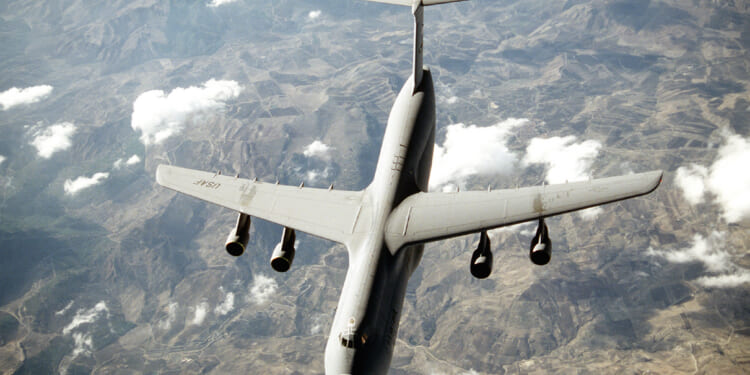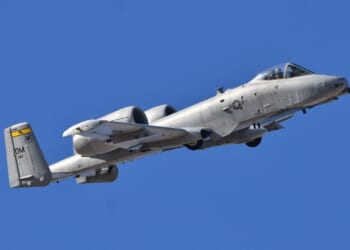Airlift platforms might not get a lot of recognition, but they play an important role in global US military operations.
The C-5 Super Galaxy and C-17 Globemaster III are excellent aircraft for the Air Force’s current needs, but the service will need something more advanced to tackle the threats of the future. So, instead of buying two replacements, the Air Force plans to tunnel funds for design and development into one aircraft.
One Aircraft Instead of Two
The Air Force has ambitious plans for its Next-Generation Air Lift (NGAL) program. During a roundtable at the Air & Space Forces Association’s 2025 Air, Space, and Cyber Conference, Air Force gen. John Lamontagne, head of Air Mobility Command, said that the service plans to replace the C-17 and C-5 with one NGAL aircraft.
“When I say two-for-one, we’re probably going to procure one aircraft. We won’t get a C-5 replacement and a C-17 replacement. There’ll be one airplane that does strategic airlift,” the senior Air Force officer said.
The C-17 and C-5 first entered service in the 1990s and 1980s, respectively. Although both aircraft have received significant upgrades to ensure that they can operate without much risk today, they are getting old. (Both aircraft are out of production.)
The Air Force is using a capabilities-based assessment to narrow down its options and pick the right airlift aircraft.
“That capabilities-based assessment takes a look at what kind of defense systems do we need? What kind of tactical agility do we need? What kind of servicing do we need? So we’ll see what that looks like,” Lamontagne said.
The Air Force plans the NGAL aircraft to be operational by the mid-2040s.
“As far as what we want in the next [generation airlift] platform, we want agility, we want speed, we want to be able to operate in a higher threat environment,” he stated, adding that this includes “countermeasures that are effective against those threats that are coming from increasingly longer ranges.”
The Air Force is designing its future air lift aircraft to be able to operate over long ranges for a good reason. The service has predicted that engagement ranges of air defense missiles could be as far as 1,000 miles by 2050. China, in particular, has been developing anti-aircraft missiles with great ranges.
The Air Force’s desire to unite capabilities and procure one airlift aircraft aligns with a wider strategy for fewer platforms that can conduct a wider range of mission sets. The F-35 Lightning II stealth fighter jet is a perfect example of this strategy. Lockheed Martin and the Air Force designed the fifth-generation fighter jet to be capable of conducting multiple mission sets, thereby standardizing procurement and maintenance by avoiding the need for multiple different aircraft.
Not Sexy But Still Important
Airlift platforms might not get the recognition that fighter jets or strategic bombers get, but they play an important role in global US military operations.
For example, during the rush to evacuate the US and NATO embassies in Afghanistan in August 2021, the Air Force’s airlift fleet played a major role in the success of the operation. In just 17 days, the US military alone evacuated over 124,000 people from Kabul. The Air Force used a wide range of air lift aircraft, including C-17 Globemasters, C-5M Super Galaxies, and C-130 Hercules. The demands of the evacuation were so high that the Air Force used approximately 111 C-17s during the operation.
In the event of a near-peer conflict with China or Russia, the US military would rely heavily on the Air Force’s Air Mobility Command to transport troops and materiel from all over the world to the area of operations.
About the Author: Stavros Atlamazoglou
Stavros Atlamazoglou is a seasoned defense journalist specializing in special operations and a Hellenic Army veteran (national service with the 575th Marine Battalion and Army HQ). He holds a BA from the Johns Hopkins University and an MA from the Johns Hopkins’ School of Advanced International Studies (SAIS). His work has been featured in Business Insider, Sandboxx, and SOFREP.
Image: Wikimedia Commons.

















